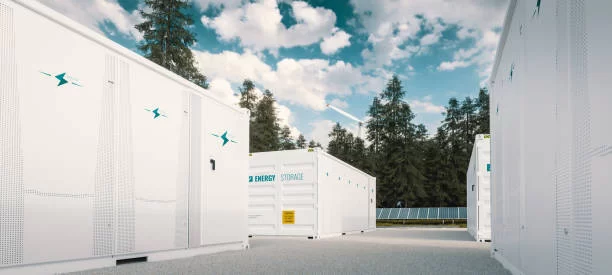Challenges and Solutions in the Deployment of ESS Containers
The deployment of Energy Storage System (ESS) containers has become increasingly crucial as the demand for renewable energy sources and efficient energy management continues to grow. ESS containers are pivotal in stabilizing the grid, managing peak loads, and integrating renewable energy sources. However, deploying these systems comes with its own set of challenges, including space limitations, environmental conditions, and logistical issues. This article will delve into these challenges and discuss potential solutions to ensure successful ESS container deployment.
Challenges in the Deployment of ESS Containers
- Space Limitations
One of the most significant challenges in deploying ESS containers is finding suitable locations. Urban areas, in particular, face severe space constraints. Installing ESS in densely populated regions requires careful planning to avoid conflicts with existing infrastructure and residential areas. Additionally, the footprint of the containers must be optimized to make efficient use of available space.
Environmental Conditions
ESS containers must operate efficiently under various environmental conditions, including extreme temperatures, humidity, and exposure to natural elements. These conditions can significantly impact the performance and lifespan of the energy storage systems. For instance, high temperatures can reduce battery efficiency and accelerate degradation, while moisture and humidity can lead to corrosion and electrical failures.
Logistical Challenges
Transporting and installing ESScontainers can be logistically challenging, especially in remote or difficult-to-access areas. The size and weight of these containers necessitate specialized transportation and handling equipment. Additionally, the installation process requires coordination with multiple stakeholders, including local authorities, utility companies, and construction teams, which can lead to delays and increased costs.
Safety Concerns
Safety is a paramount concern when deploying ESS containers, as they contain high-energy batteries that pose risks such as fire and explosions if not managed properly. Ensuring the safety of these systems involves implementing robust safety protocols, regular maintenance, and monitoring systems to detect and mitigate potential hazards.
Regulatory and Compliance Issues
The deployment of ESS is subject to various regulatory and compliance requirements, which can vary significantly between regions. Navigating these regulations can be complex and time-consuming, often requiring detailed documentation and approvals from multiple regulatory bodies. Ensuring compliance with local, national, and international standards is essential to avoid legal and operational issues.
Solutions to Overcome Deployment Challenges
- Optimizing Space Utilization
To address space limitations, ESS can be designed with a modular and compact footprint. Utilizing vertical stacking and innovative layout designs can maximize the use of available space. Additionally, deploying ESS in underutilized areas such as rooftops, basements, or underground facilities can provide viable solutions in urban environments.
Enhancing Environmental Resilience
Improving the environmental resilience of ESS involves using advanced thermal management systems to maintain optimal operating temperatures. Insulation and weatherproofing measures can protect the systems from extreme temperatures and humidity. Additionally, incorporating robust ventilation and cooling systems can mitigate the adverse effects of environmental conditions on battery performance and longevity.
Streamlining Logistics
To overcome logistical challenges, collaborating with experienced logistics providers and utilizing specialized transportation equipment is essential. Pre-assembly of components off-site can simplify the installation process and reduce on-site construction time. Developing standardized procedures and checklists can enhance coordination among stakeholders and streamline the deployment process.
Implementing Advanced Safety Measures
Ensuring the safety of ESScontainers requires a multi-faceted approach. Incorporating fire suppression systems, thermal runaway prevention technologies, and real-time monitoring systems can significantly enhance safety. Regular maintenance and safety audits, along with staff training on emergency response protocols, are crucial to preventing and managing potential safety incidents.
Navigating Regulatory and Compliance Requirements
Staying informed about regulatory and compliance requirements is critical for successful ESS deployment. Engaging with regulatory bodies early in the planning process can facilitate smoother approvals and ensure adherence to all necessary standards. Developing comprehensive documentation and maintaining transparent communication with regulators can help navigate the complexities of compliance.
Case Studies of Successful ESS Container Deployments
- Urban Deployment in New York City
In New York City, a major utility company successfully deployed ESS in a densely populated area by utilizing a modular design and installing the containers on a vacant rooftop. Advanced thermal management systems were integrated to handle the city’s temperature variations, and fire suppression technologies ensured safety. The project involved close collaboration with city authorities and adherence to stringent regulatory standards, demonstrating a successful urban deployment.
Remote Deployment in Australia
In remote regions of Australia, ESS were deployed to support off-grid communities reliant on renewable energy sources. The containers were pre-assembled off-site and transported using specialized equipment. Robust insulation and weatherproofing measures were implemented to withstand extreme temperatures and harsh environmental conditions. The project showcased the feasibility of deploying ESS in challenging and remote locations.
Conclusion
The deployment of ESScontainers is essential for modern energy management, offering solutions for grid stability, peak load management, and renewable energy integration. However, this process is not without challenges, including space limitations, environmental conditions, logistical issues, safety concerns, and regulatory complexities. By optimizing space utilization, enhancing environmental resilience, streamlining logistics, implementing advanced safety measures, and navigating regulatory requirements, these challenges can be effectively addressed. Successful case studies from urban and remote deployments illustrate the potential for overcoming these obstacles and achieving efficient and safe ESS container installations.

